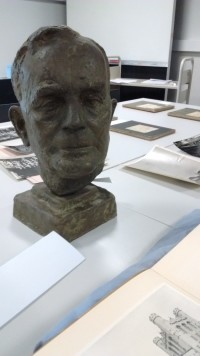Category Archives: General
Neutron star merger as it happened
By Hamish Johnston
At 12:41:20 UTC on 17 August, the Fermi Gamma-ray Space Telescope sent a notice to the astronomy community saying that it had detected a gamma-ray burst. Normally such an event wouldn’t raise much fuss – but this time things would be very different.
Back on Earth, scientists working on the LIGO-Virgo gravitational wave detectors were busy analysing a signal that had arrived about 2 s before the gamma-ray burst and looked very much like the merger of two neutron stars. Such a cataclysmic event is expected to give off copious amounts of electromagnetic radiation including an initial burst of gamma rays.
View all posts by this author | View this author's profile
A glimpse of Einstein in Zurich
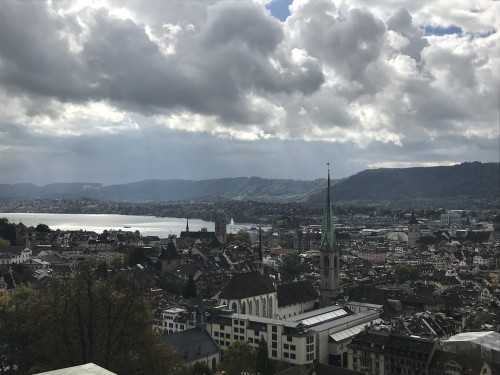
A Swiss view: Looking out over Zurich from the rooftop restaurant at ETH Zurich (Courtesy: Sarah Tesh)
By Sarah Tesh
Zurich is one of my favourite cities. Located in the north of Switzerland, it sits at the tip of a glistening, clear lake, with snow-topped mountains in the distance. The buildings are beautiful, the people are friendly and public transport is incredibly efficient. It is also home to multiple world-class science and technology institutes.
So when Physics World was invited to visit two of these facilities, I jumped at the chance to go. Our hosts for the trip were the international organization IBM Research, and ETH Zurich, a STEM-focused university, and the event was a showcase for some of their medical, computer science and quantum-computing research.
View all posts by this author | View this author's profile
How does LIGO detect gravitational waves?
By Hamish Johnston
This year’s physics Nobel prize has gone to three physicists who pioneered the LIGO observatory, which in 2015 made the first-ever detection of gravitational waves.
The LIGO detectors are famously capable of detecting changes in length smaller than one thousandth the diameter of a proton.
So how is this done?
View all posts by this author | View this author's profile
Nobel prize heralds new era of multimessenger astronomy
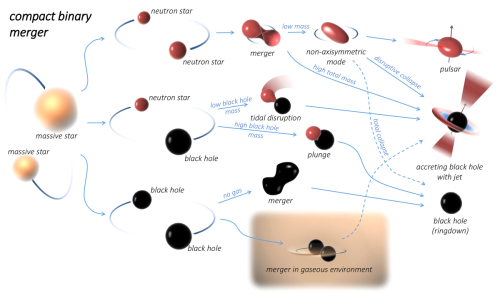
Brave new worlds: what LIGO–Virgo could see. Click on image to expand. (Courtesy: I Bartos and M Kowalski)
By Hamish Johnston
I think it’s safe to say that most Nobel-watchers were predicting a LIGO-related physics prize this year, and for very good reasons.
View all posts by this author | View this author's profile
The physics of bread, the quest for metallic hydrogen and adventures in LIGO land
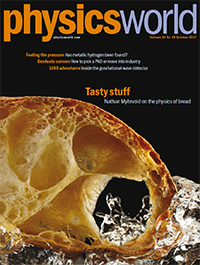 By Matin Durrani
By Matin Durrani
If you’re a student wondering whether to go into research or bag a job in industry, don’t miss our latest Graduate Careers special, which you can read in the October issue of Physics World.
Philip Judge from the US National Center for Atmospheric Research and his colleagues Isabel Lipartito and Robert Casini first describe how budding researchers should pick a PhD to work on. It’s vital as that first project can determine the trajectory of your future career.
But if your eyes are set on a job outside academia, careers guru Crystal Bailey from the American Physical Society runs through your options and calls on academics to learn more about what’s on offer so they can advise their students better.
If you’d rather just stick your head in the sand about your career options, however, then why not enjoy the cover feature of the October issue, in which former Microsoft chief tech officer and Intellectual Ventures boss Nathan Myhrvold discusses his massive new five-volume treatise Modernist Bread.
Mixing history and science – as well as the results of more than 1600 of his own experiments – the book is sure to be the last word on this foodstuff that humans have been baking for millennia.
Don’t miss either Jon Cartwright’s feature on the quest for metallic hydrogen.
Remember that if you’re a member of the Institute of Physics, you can read the whole of Physics World magazine every month via our digital apps for iOS, Android and Web browsers.
View all posts by this author | View this author's profile
Quantum quartet is on the cards

Quantum pair: Wolfgang Pauli and Werner Heisenberg (Courtesy: Sabine Hossenfelder)
By Hamish Johnston
Theoretical physicist and blogger Sabine Hossenfelder has created a lovely set of cards featuring pioneering quantum physicists. You can see my two favourites above.
Resembling football or baseball cards, they each feature a portrait plus a fact or two about the physicist – including a salacious aspect of Erwin Schrödinger’s personal life. You will have go to Hossenfelder’s blog to learn more about that – and see the rest of the cards, including a feline “Bra-ket” as the joker of the deck.
View all posts by this author | View this author's profile
Seeking causes of Mexico City’s earthquake
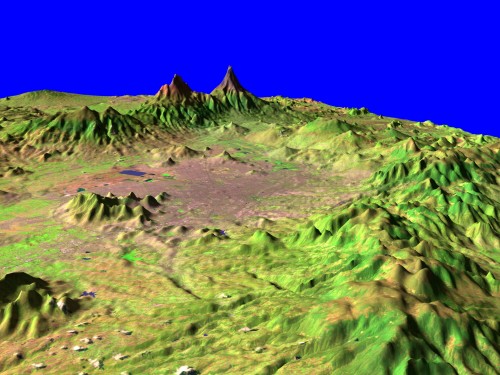
Mexico City: built on a basin of sedimentary rock from eroded mountains. (Courtesy: NASA/Goddard Space Flight Center Scientific Visualization Studio)
By James Dacey
At the time of writing, the official death toll stands at more than 200 people following the magnitude 7.1 earthquake that struck near Mexico City on Tuesday. According to the secretary of education, 200 schools have been affected, including the Enrique Rébsamen elementary school in Mexico City’s southern Coapa district where 37 people died, as reported by the BBC. Meanwhile buildings have collapsed at a campus of the Monterrey Institute of Technology killing five people and injuring 40, also in the south of the city.
In a cruel twist of fate, the quake struck on the day of the 32nd anniversary of the 1985 Mexico City earthquake that led to the death of up to 10 000 people. Even though yesterday’s event is likely to claim fewer victims than the 1985 disaster, it is still a shocking reminder of how vulnerable Mexico City is to earthquake damage.
View all posts by this author | View this author's profile
Grabbing a slice of the pie in the sky
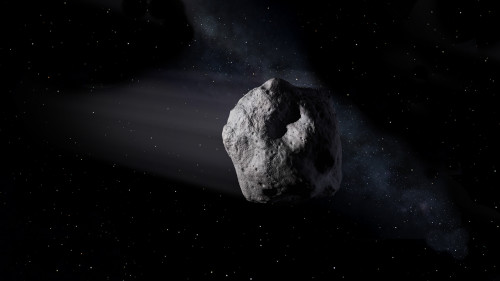
(Courtesy: NASA)
By Margaret Harris at the European Planetary Science Congress in Riga, Latvia
If you wanted to mine an asteroid, what would you need? Right now, it’s a hypothetical question: only a handful of spacecraft have ever visited an asteroid, and fewer still have studied one in detail. As commercial ventures go, it’s not exactly a sure thing. But put that aside for a moment. If you wanted to create an asteroid-mining industry from scratch, how would you do it?
Well, for starters, you’d need to know which asteroids to target. “Not every mountain is a gold mine, and that’s true for asteroids too,” astrophysicist Martin Elvis told audience members at the European Planetary Science Congress (EPSC) yesterday. For every platinum-rich asteroid sending dollar signs into investors’ eyes, Elvis explained there are perhaps 100 commercially useless chunks of carbon whizzing around out there, and the odds for water-rich asteroids aren’t much better. Moreover, some of those valuable asteroids will be impractical to mine, either because of their speed and location or because they’re too small to give a good return on investment. “Smaller asteroids aren’t even worth a billion dollars,” Elvis scoffed. “Who’d get out of bed for that?”
View all posts by this author | View this author's profile
Why is quantum physics so hard to write about?
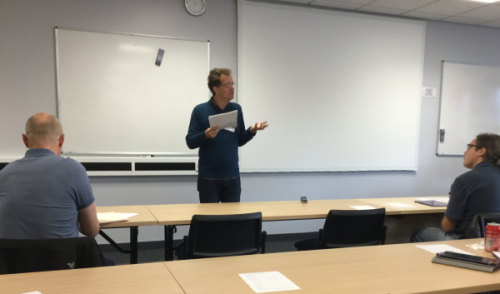
Live at Leeds: George Musser riffs on writing about quantum mechanics (Courtesy: H Johnston)
By Hamish Johnston
Why is quantum physics so hard to write about?
That was the theme of George Musser’s keynote talk at a seminar for science communicators held this week at the University of Leeds. Musser – who has written extensively on topics such as quantum entanglement and string theory – gave several reasons and here are a few that stuck in my mind.
(more…)
View all posts by this author | View this author's profile
In the footsteps of Cecil Powell
By Matin Durrani
I spent yesterday at the University of Bristol, where a meeting was held to celebrate the 70th anniversary of the discovery of the pion in 1947.
The particle was spotted by Cecil Powell, who joined the university’s physics department in 1928 and went on to win the 1950 Nobel Prize for Physics for his efforts.
At the time, the pion was thought to be the carrier of the strong nuclear force, which binds protons and neutrons in the nucleus, though we now know it is one of a family of strongly interacting mesons.
As we heard yesterday from introductory speaker Brian Pollard, Powell found evidence for the pion using a series of ingenious (and literally breathtaking) experiments that involved him taking specially manufactured photographic plates to high altitudes up the Pic-du-Midi mountain in the Pyrenees.
View all posts by this author | View this author's profile

